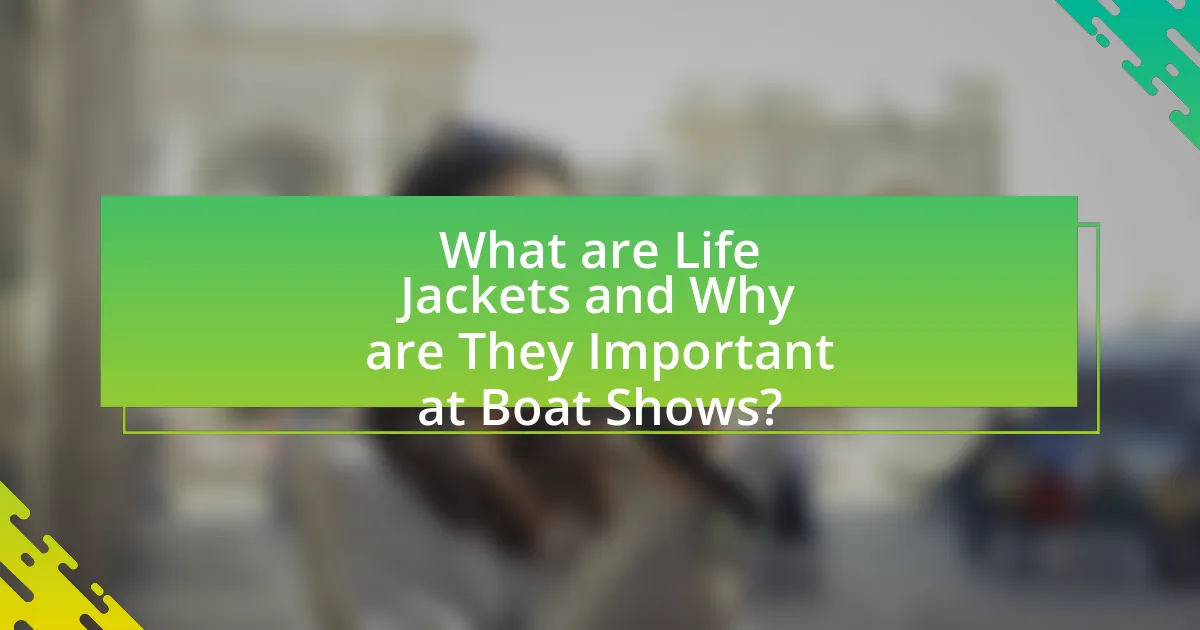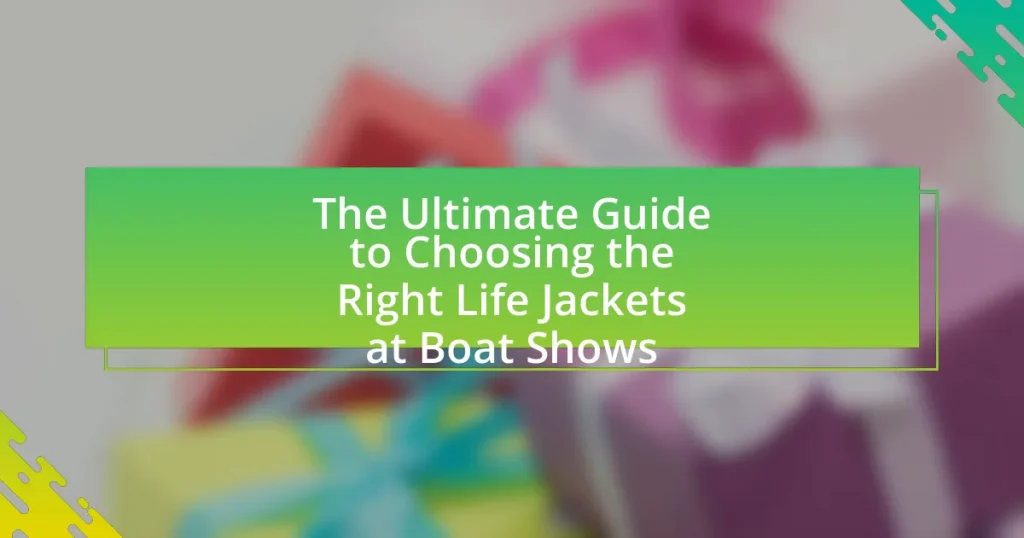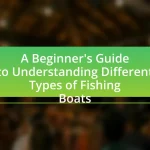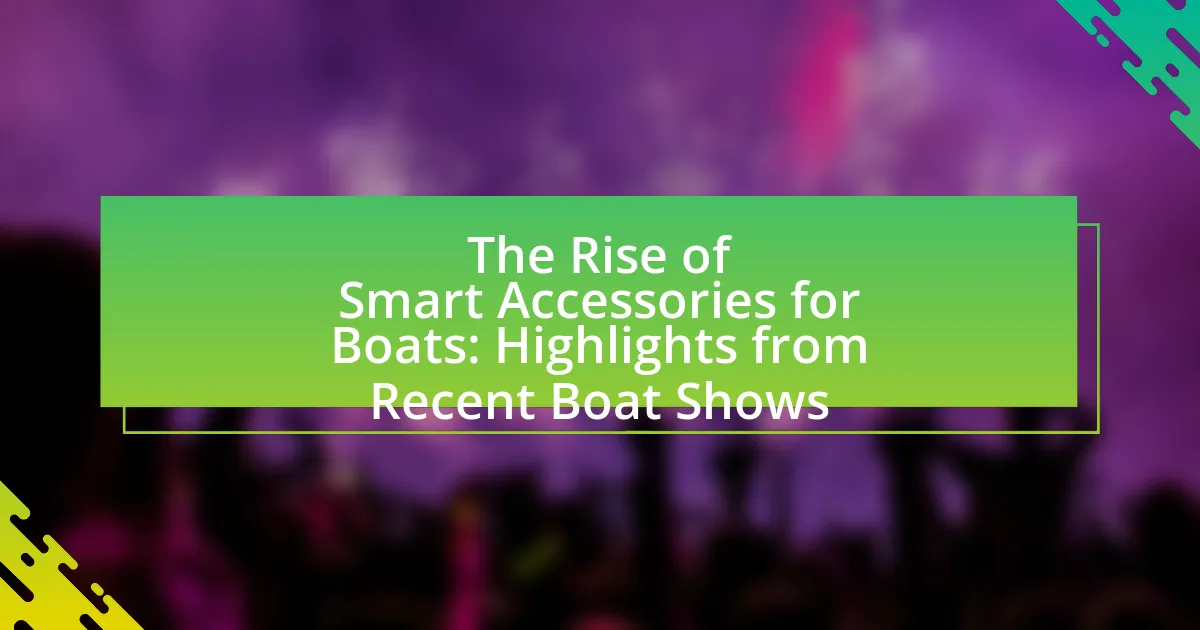The article focuses on life jackets, essential personal flotation devices that enhance safety during boating activities, particularly at boat shows. It covers their importance, functionality, and the various types available, including Type I through V, each designed for specific conditions and activities. Key components, design variations, and regulations governing life jackets are discussed, along with best practices for selection, maintenance, and testing at boat shows. The article also addresses common misconceptions and mistakes to avoid when choosing a life jacket, ensuring readers are well-informed to make safe and effective choices for their boating needs.

What are Life Jackets and Why are They Important at Boat Shows?
Life jackets are personal flotation devices designed to keep individuals afloat in water, significantly enhancing safety during boating activities. Their importance at boat shows lies in the demonstration of safety protocols and the promotion of responsible boating practices. Boat shows often feature various life jacket models, allowing attendees to understand their features, fit, and compliance with safety regulations. According to the U.S. Coast Guard, wearing a life jacket can reduce the risk of drowning by 80%, underscoring their critical role in water safety.
How do Life Jackets Function in Water Safety?
Life jackets function in water safety by providing buoyancy to keep individuals afloat in water, thereby reducing the risk of drowning. They are designed with materials that are less dense than water, such as foam or inflatable chambers, which allow them to support the weight of a person. According to the U.S. Coast Guard, wearing a life jacket can increase the chances of survival in water emergencies by up to 80%. This effectiveness is particularly crucial in situations where individuals may be incapacitated or unable to swim, as life jackets help maintain a person’s head above water, allowing for easier breathing and visibility.
What are the key components of a life jacket?
The key components of a life jacket include buoyancy material, straps and buckles, a flotation collar, and reflective strips. Buoyancy material, typically made from foam or inflatable chambers, provides the necessary lift to keep a person afloat. Straps and buckles secure the life jacket to the wearer, ensuring it remains in place during use. The flotation collar supports the head and keeps it above water, while reflective strips enhance visibility in low-light conditions. These components work together to ensure safety and effectiveness in water emergencies.
How do different designs affect buoyancy and safety?
Different designs of life jackets significantly affect buoyancy and safety by influencing how well they keep a person afloat and how effectively they protect against drowning. For instance, inherently buoyant designs, such as those made from foam, provide immediate flotation without requiring any action from the wearer, which is crucial in emergencies. Conversely, inflatable designs rely on the user activating the inflation mechanism, which may delay buoyancy in critical situations.
Additionally, the shape and fit of a life jacket can impact safety. A well-fitted jacket ensures that the wearer remains upright in the water, reducing the risk of face-down positioning, which can lead to drowning. Research indicates that life jackets designed with higher neck support and wider armholes enhance comfort and mobility, encouraging consistent use, which is vital for safety. Therefore, the design of life jackets directly correlates with their effectiveness in providing buoyancy and ensuring the safety of users in aquatic environments.
What Types of Life Jackets are Available at Boat Shows?
At boat shows, various types of life jackets are available, including Type I (Offshore Life Jackets), Type II (Near-Shore Buoyant Vests), Type III (Flotation Aids), Type IV (Throwable Devices), and Type V (Special Use Life Jackets). Each type serves a specific purpose: Type I is designed for rough waters and provides the highest buoyancy, while Type II is suitable for calm waters and Type III is often used for activities like kayaking. Type IV is intended for throwing to someone in distress, and Type V is for specific activities like windsurfing or kayaking. The availability of these types at boat shows allows consumers to choose the most appropriate life jacket based on their boating activities and safety needs.
What are the differences between Type I, II, III, IV, and V life jackets?
Type I, II, III, IV, and V life jackets differ primarily in their design, intended use, and buoyancy characteristics. Type I life jackets, also known as offshore life jackets, provide the highest level of buoyancy and are designed for rough waters, ensuring that an unconscious person will float face-up. Type II life jackets, or near-shore buoyant vests, are suitable for calm waters and provide less buoyancy than Type I, making them ideal for recreational boating. Type III life jackets are designed for specific activities like water skiing and offer comfort and freedom of movement, but they may not turn an unconscious person face-up. Type IV life jackets are throwable devices, such as cushions or rings, meant for quick rescue rather than continuous wear. Type V life jackets are special-use devices that must be worn to be effective and are designed for specific activities like kayaking or windsurfing. Each type meets different safety standards set by the U.S. Coast Guard, ensuring they are appropriate for their intended environments and uses.
How do specialized life jackets cater to different activities?
Specialized life jackets cater to different activities by incorporating design features and buoyancy levels tailored to specific water sports and conditions. For instance, kayaking life jackets are designed with a low profile and high mobility to allow paddlers to maneuver easily, while sailing life jackets often include additional flotation in the back to support a seated position. Furthermore, water skiing life jackets are typically more streamlined to reduce drag, and they may have additional straps for a secure fit during high-speed activities. These variations ensure that users receive optimal safety and comfort based on the demands of their chosen activity.
What Regulations Govern Life Jackets at Boat Shows?
Life jackets at boat shows are governed by regulations set forth by the U.S. Coast Guard, which mandates that all personal flotation devices (PFDs) must meet specific safety standards. These standards include compliance with the performance requirements outlined in the Code of Federal Regulations (CFR), specifically 46 CFR Part 160, which details the testing and labeling requirements for life jackets. Additionally, boat shows may adhere to state regulations that further specify the types of life jackets required for display and sale, ensuring they are approved for use in the respective state waters.
What are the legal requirements for life jackets in various regions?
Legal requirements for life jackets vary by region, with specific regulations established by maritime authorities. In the United States, the Coast Guard mandates that all vessels must carry a U.S. Coast Guard-approved life jacket for each person on board, and children under 13 years old are required to wear one while the vessel is underway. In Canada, Transport Canada requires that all boats have a life jacket or personal flotation device for each passenger, and children under 12 must wear one at all times on small boats. In the European Union, the requirements differ by country, but generally, all vessels must have life jackets available for all passengers, with specific regulations on their use depending on the type of vessel and the waters navigated. These regulations are enforced to enhance safety and reduce drowning incidents in aquatic environments.
How do boat show regulations influence life jacket selection?
Boat show regulations significantly influence life jacket selection by establishing safety standards that manufacturers must meet to exhibit their products. These regulations often require life jackets to comply with specific buoyancy ratings, materials, and design features, ensuring they provide adequate protection in various water conditions. For instance, the U.S. Coast Guard mandates that life jackets sold in the U.S. must be approved under specific performance criteria, which directly impacts the types of jackets showcased at boat shows. Consequently, exhibitors focus on presenting life jackets that not only meet these regulatory standards but also highlight their safety features, thereby guiding consumers toward compliant and effective options.
How to Choose the Right Life Jacket at a Boat Show?
To choose the right life jacket at a boat show, first assess the type of boating activities you will engage in, as different activities require specific life jacket types. For instance, if you plan to participate in high-speed water sports, select a life jacket designed for that purpose, such as a Type III or Type V, which offers mobility and comfort. Additionally, ensure the life jacket fits properly; it should be snug but not restrictive, allowing for movement while keeping you afloat. According to the U.S. Coast Guard, life jackets must be approved and labeled for safety standards, so check for the Coast Guard approval label on the jacket. Finally, consider the material and features, such as buoyancy, pockets, and reflective strips, which enhance safety and convenience.
What factors should you consider when selecting a life jacket?
When selecting a life jacket, consider factors such as buoyancy, fit, type, and intended use. Buoyancy is crucial as it determines the jacket’s ability to keep a person afloat; for instance, a Type I life jacket offers the highest buoyancy and is suitable for rough waters. The fit is essential for comfort and effectiveness; a properly fitting life jacket should be snug but not restrictive. The type of life jacket, categorized into Types I through V, dictates its design and suitability for various activities, such as kayaking or sailing. Lastly, consider the intended use, as different environments and activities may require specific features, such as additional visibility or insulation.
How do you determine the correct size and fit for a life jacket?
To determine the correct size and fit for a life jacket, measure the wearer’s chest circumference and weight, as these are critical factors in ensuring safety and comfort. Life jackets are typically sized based on these measurements, with manufacturers providing sizing charts that correlate chest size and weight to specific jacket sizes. For example, a life jacket may be labeled as suitable for individuals weighing between 90-150 pounds and having a chest size of 30-40 inches. Ensuring that the life jacket fits snugly without being overly tight is essential, as a proper fit prevents the jacket from riding up in the water, which can compromise safety.
What Features Should You Look for in a Life Jacket?
When selecting a life jacket, prioritize features such as buoyancy, fit, visibility, and additional safety elements. Buoyancy is crucial; life jackets should provide adequate flotation to keep the wearer above water. A proper fit ensures comfort and effectiveness, as a poorly fitting jacket can slip off or restrict movement. Visibility is important for safety; bright colors and reflective materials enhance the chances of being seen in emergencies. Additional safety features may include whistle attachments, reflective strips, and pockets for storing essential items. These features collectively enhance the life jacket’s performance and reliability in critical situations.
How do comfort and mobility impact your choice of life jacket?
Comfort and mobility significantly influence the choice of life jacket by ensuring that the wearer can move freely and remain comfortable during use. A life jacket that fits well and allows for a full range of motion enhances safety, as it encourages the wearer to engage in activities such as swimming or paddling without restriction. Studies indicate that discomfort can lead to reduced usage of safety gear; for instance, a survey by the U.S. Coast Guard found that 70% of boaters who reported discomfort were less likely to wear their life jackets consistently. Therefore, selecting a life jacket that balances comfort and mobility is crucial for promoting safety and encouraging regular use.
What additional features enhance safety and usability?
Additional features that enhance safety and usability in life jackets include reflective strips, whistle attachments, and adjustable straps. Reflective strips improve visibility in low-light conditions, which is crucial for safety during emergencies. Whistle attachments provide a means of signaling for help, increasing the chances of rescue. Adjustable straps ensure a secure fit, allowing for better mobility and comfort, which is essential for usability. These features collectively contribute to a more effective and user-friendly life jacket experience.
How Can You Test Life Jackets at Boat Shows?
To test life jackets at boat shows, attendees should physically try on the jackets to assess fit, comfort, and buoyancy. This hands-on approach allows individuals to evaluate how the life jacket feels when worn, ensuring it is snug but not restrictive. Additionally, participants can check for features such as adjustable straps, reflective materials, and pockets, which enhance usability. Testing buoyancy can be simulated by entering a designated water area or using a demonstration pool, where the life jacket’s performance in water can be observed. This practical evaluation is crucial, as studies indicate that a properly fitted life jacket significantly increases safety in water activities.
What methods can you use to assess the fit and comfort of a life jacket?
To assess the fit and comfort of a life jacket, individuals can use several methods including trying it on, checking for proper buoyancy, and evaluating mobility. Trying on the life jacket ensures it fits snugly without being overly tight, allowing for a comfortable range of motion. Proper buoyancy can be assessed by ensuring the jacket keeps the wearer’s head above water when floating. Evaluating mobility involves performing movements such as reaching and twisting to confirm that the life jacket does not restrict movement. These methods are essential as they help ensure safety and comfort, which are critical for effective use in water activities.
How do you evaluate the quality and durability of life jackets on display?
To evaluate the quality and durability of life jackets on display, examine the materials used, construction techniques, and compliance with safety standards. High-quality life jackets typically utilize durable fabrics such as nylon or polyester, which resist wear and tear. Additionally, check for reinforced stitching and secure buckles, as these features enhance longevity. Life jackets should also meet regulatory standards, such as those set by the U.S. Coast Guard, which ensures they have been tested for safety and performance. For instance, life jackets labeled as Type III are designed for comfort and are suitable for various water activities, indicating their reliability.
What Common Mistakes Should You Avoid When Choosing a Life Jacket?
When choosing a life jacket, common mistakes to avoid include selecting the wrong size, neglecting to check for proper certification, and overlooking the specific activity for which the jacket is intended. Selecting the wrong size can lead to inadequate buoyancy and safety, as a life jacket must fit snugly to function correctly. Neglecting to check for proper certification, such as the U.S. Coast Guard approval, can result in using a jacket that does not meet safety standards. Additionally, overlooking the specific activity, whether it be kayaking, sailing, or fishing, can lead to choosing a life jacket that lacks the necessary features for that activity, such as mobility or additional flotation.
What misconceptions about life jackets should you be aware of?
One common misconception about life jackets is that they are only necessary for weak swimmers. In reality, life jackets are essential for everyone, regardless of swimming ability, as they provide buoyancy and can save lives in emergencies. According to the U.S. Coast Guard, nearly 85% of drowning victims were not wearing a life jacket, highlighting the importance of wearing one at all times while on the water. Another misconception is that all life jackets are the same; however, they come in various types designed for specific activities and conditions, such as offshore, nearshore, and inflatable options, each with unique safety features.
How can improper selection affect safety on the water?
Improper selection of life jackets can significantly compromise safety on the water by failing to provide adequate buoyancy and fit for the wearer. When a life jacket is not suited to an individual’s size, weight, or activity level, it may not function effectively in emergencies, leading to drowning risks. For instance, the U.S. Coast Guard reports that 86% of drowning victims were not wearing life jackets, highlighting the critical importance of proper selection. Additionally, life jackets that are too loose can slip off, while those that are too tight can restrict movement and breathing, further endangering the wearer.
What are the Best Practices for Life Jacket Maintenance?
The best practices for life jacket maintenance include regular inspection, proper cleaning, and appropriate storage. Regularly inspect life jackets for signs of wear, such as frayed straps, damaged buckles, or compromised buoyancy material, as these issues can affect performance in emergencies. Cleaning should be done with mild soap and water, avoiding harsh chemicals that can degrade materials; this helps maintain the integrity of the life jacket. Additionally, store life jackets in a cool, dry place away from direct sunlight to prevent deterioration from UV exposure. Following these practices ensures that life jackets remain effective and safe for use.
How should you clean and store your life jacket after use?
To clean and store your life jacket after use, rinse it thoroughly with fresh water to remove salt, sand, and debris, then hang it to dry in a cool, shaded area away from direct sunlight. This method prevents deterioration of the materials and maintains buoyancy. Proper storage involves keeping the life jacket in a dry, well-ventilated space, ideally in a storage bag or container that protects it from dust and moisture. Regular maintenance, including checking for signs of wear or damage, ensures the life jacket remains safe and functional for future use.
What signs indicate that a life jacket needs to be replaced?
A life jacket needs to be replaced if it shows signs of wear such as frayed straps, damaged buckles, or faded colors. Additionally, if the life jacket has lost its buoyancy or has any punctures or leaks, it is no longer effective and should be discarded. Regular inspections are crucial, as the U.S. Coast Guard recommends checking for these issues annually to ensure safety on the water.
What Tips Can Help You Make the Best Choice at Boat Shows?
To make the best choice at boat shows, prioritize researching the specific life jacket brands and models that interest you before attending. This preparation allows you to compare features, safety ratings, and prices effectively. Additionally, engage with knowledgeable staff at the show to ask questions about the life jackets’ compliance with safety standards, such as the U.S. Coast Guard regulations, which require life jackets to meet specific buoyancy and performance criteria. Finally, try on different life jackets to assess comfort and fit, as a properly fitting life jacket is crucial for safety and usability.
How can you effectively compare different life jackets at a boat show?
To effectively compare different life jackets at a boat show, examine key features such as buoyancy, fit, material, and safety certifications. Buoyancy ratings indicate the level of flotation provided, while a proper fit ensures comfort and effectiveness in emergencies. Materials should be durable and water-resistant, and safety certifications, like those from the U.S. Coast Guard, validate compliance with safety standards. By focusing on these aspects, you can make informed decisions based on performance and safety.
What questions should you ask vendors about life jackets?
When engaging with vendors about life jackets, ask the following questions: What are the safety certifications of the life jackets? Understanding safety certifications, such as those from the U.S. Coast Guard, ensures compliance with safety standards. What materials are used in the construction of the life jackets? Knowing the materials helps assess durability and comfort. What sizes and fits are available? Proper fit is crucial for effectiveness in emergencies. Are there specific features, such as reflective strips or whistle attachments? These features enhance visibility and safety. What is the warranty or return policy? A clear warranty indicates the vendor’s confidence in their product. Finally, can you provide information on maintenance and care? Proper maintenance extends the life of the life jackets.






